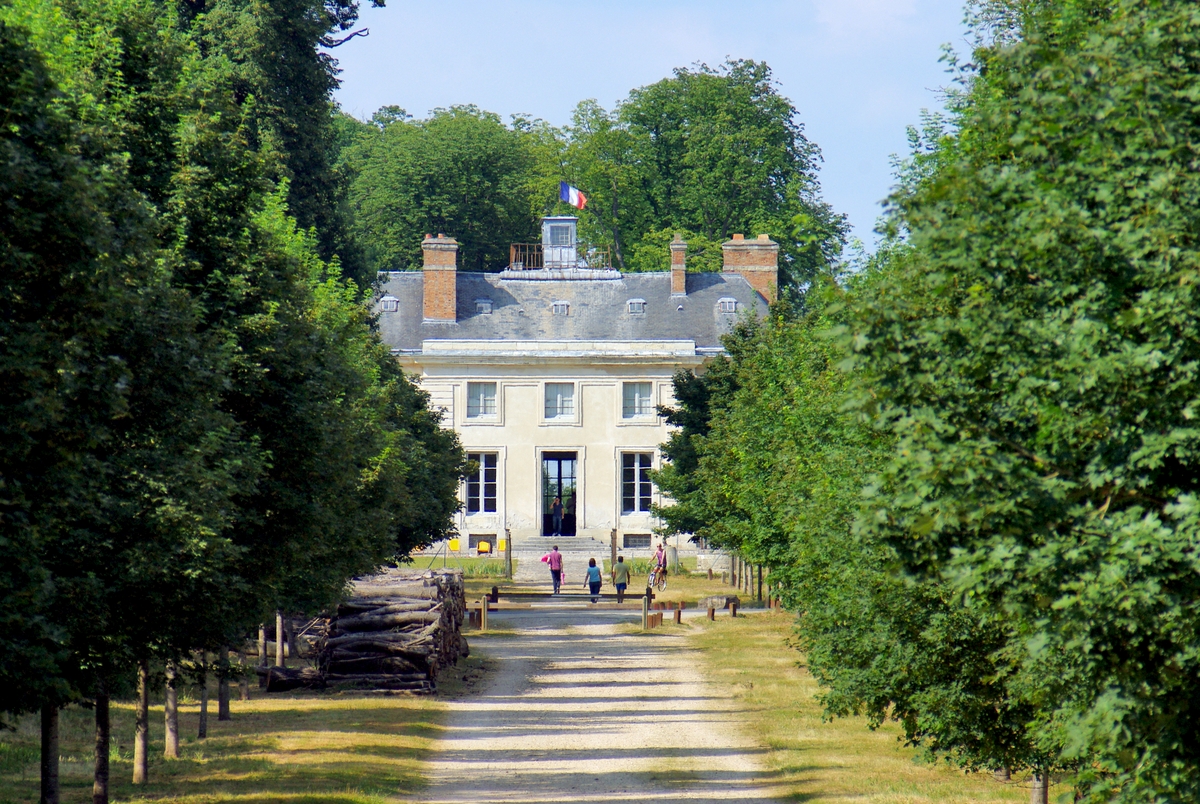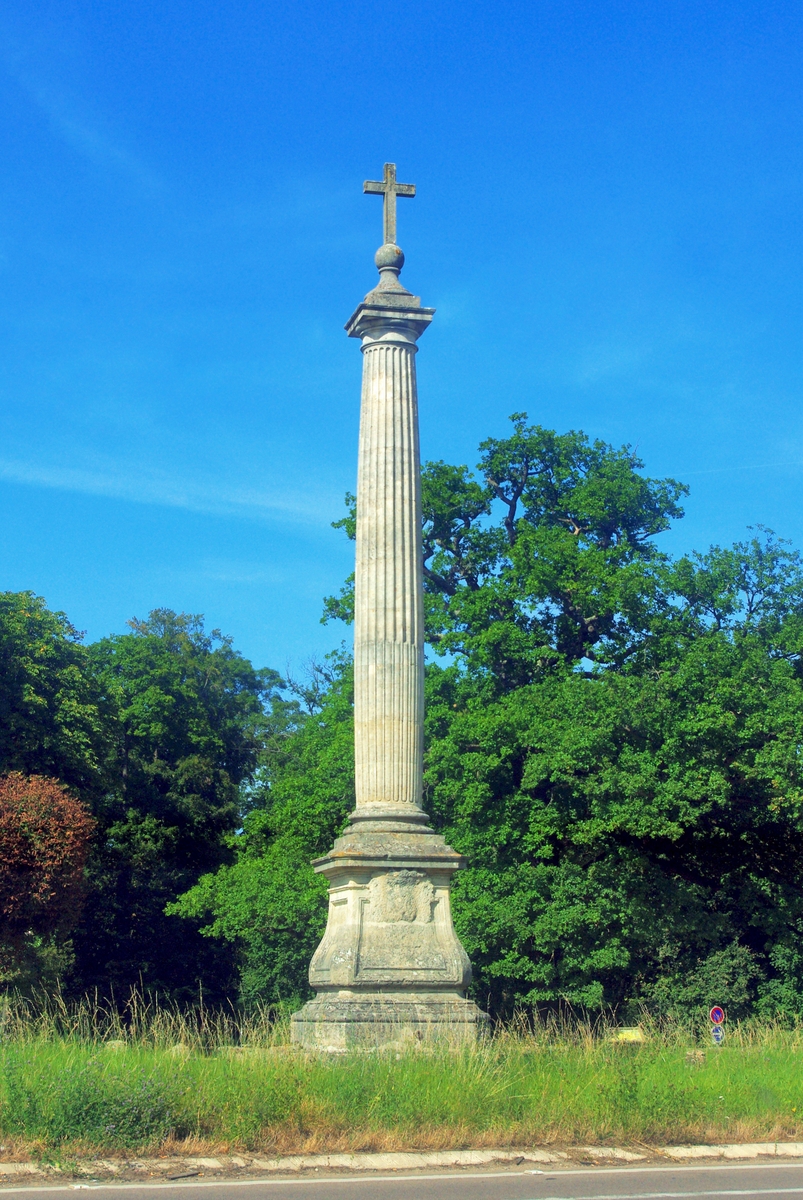The forest of Saint-Germain-en-Laye is situated 20 km West of Paris and extends within a meander of the River Seine. It is surrounded by the towns of Saint-Germain-en-Laye, Poissy, Achères, Maisons-Laffitte and Le Mesnil-le-Roi. The entire forest (35km2) is situated within the commune of Saint-Germain-en-Laye.
Trees and Pathways in the forest of Saint-Germain

The forest boosts many hundred year-old trees and is mainly composed of sessile oak (53%). Beech (18%) were planted extensively between 1890 and 1950. The forest also includes hornbeam (8%), scots pine and European black pine (12%) as well as maple, ash, wild cherry, rowan, birch, aspen, wild service tree, chestnut.
Many paths crisscrossed the forest: walking paths including a botanical trail and the Avenue Verte London-Paris avenue cycle path, horse riding paths…

The forest of Saint-Germain: a bit of History

The forest of Saint-Germain-en-Laye was part of the ancient Forest of Yveline which used to stretch from Meudon to Rambouillet via Marly. As many kings of France resided in the royal castle of Saint-Germain-en-Laye, the forest was their hunting domain.

Henry IV and Louis XIII were fond of fox hunting while François I had the forest redesigned with star-like crossroads (Lamballe, Penthièvre, Provence, Artois…) and crucifixes (croix Dauphine from 1535, Croix Saint-Simon from 1645, croix de Poissy from 1640, croix de Noailles…).
In the 17th century Louis XIV commissioned from his landscape architect André Le Nôtre the construction of a monumental terrace bordering the forest and overlooking the River Seine valley.
Since the 18th century, the forest has been encircled with a high wall opened here and there by a dozen of monumental gates. The latter were closed at night to limit poaching and to prevent game from escaping the woods.


The arrival of the railway in 1835 (line Paris-Saint-Lazare to Saint-Germain) and the later development of the car attracted more and more visitors into the forest. Today it is estimated that between 2 and 3 million people visit the forest each year.

In 1889 the City of Paris bought 4.3 km2 to the North of the forest to build a large sewage system. Today the site is the largest sewage plant in the Paris region.
Since the 19th century the forest of Saint-Germain-en-Laye has lost 8 km2 of its surface area to motorways, roads, railway lines, sewage plants, military bases and other built up areas.

The main sites to see in the forest of Saint-Germain

The forest is home to a few sites of interest.
The former Loges Convent
The former Loges Convent (Couvent des Loges), founded in 1644 by Anne of Austria has housed the Maison de l’Éducation de la Légion d’Honneur since 1811. The houses were entirely rebuilt in the 19th century.
The Muette Pavilion

The Muette Pavilion (Pavillon de la Muette) was a hunting meeting place. Situated to the north of the forest, not far from Maisons-Laffitte, it was built by Ange-Jacques Gabriel for Louis XV in 1775 on the remains of a former castle.
Walk towards the railway footbridge to admire the perspective leading the pavilion:

The Croix-de-Noailles
The Croix-de-Noailles Pavilion (Pavillon de la Croix-de-Noailles) was also a hunting meeting place and now houses a restaurant. In 1751, the Dukes of Noailles then governors of Saint-Germain-en-Laye built a tall pillar surmounted by a cross and placed it at the crossroads. Dismantled in 1793 it was restored in 1953.

The site quickly became an important landmark in the forest. It was planned in the beginning of the 20th century to extend the Historical Axis of Paris to the Croix de Noailles. The triumphal way would have then run from the Louvre to the forest via La Défense. The outbreak of the First World War put an end to that gigantic plan.
The Château du Val
The Château du Val above the village of Le Mesnil-le-Roi was built in 1675 by Jules Hardouin-Mansart for Louis XIV.

The estate was left inhabited when Louis XVI moved to Versailles (1682). It was renovated as a place of residence by Charles Juste de Beauvau (1720–1793), future Marshal of France (1783). Brother of the famous Madame de Boufflers, the French nobleman was born in Lunéville to a family that were the most powerful in Lorraine after the ruling Duke of Lorraine.
The chateau has recently been transformed into a three star hotel which enjoys good guest reviews.
>> Book your room at the Château du Val <<

Cazaudehore: a gastronomic restaurant and luxury hotel
The forest is home to a reputed gastronomic restaurant and a luxury hotel: Cazaudehore – la Forestière. A member of the Relais et Châteaux network, the domain has been owned by the same family for 3 generations and offers dishes according to the seasons.
I was fortunate to have lunch there, courtesy of the restaurant, and spent a fantastic time (see the photos below!)
>> Book your room at the Cazaudehore hotel <<
The Fête des Loges
Since 1652 the forest has welcomed one of the largest and oldest funfairs in the Paris Region: the Fête des Loges. Every summer for 7 weeks nearly 3 million visitors enjoy the many stalls, rides and attractions spread across the lawns of the forest.
![Fête des Loges © Lionel Allorge - licence [CC BY-SA 3.0] from Wikimedia Commons](https://frenchmoments.eu/wp-content/uploads/2016/02/Fête-des-Loges-©-Lionel-Allorge-licence-CC-BY-SA-3.0-from-Wikimedia-Commons.jpg)
Useful Links about Saint-Germain-en-Laye

- Saint-Germain-en-Laye Tourist Office
- National Museum of Archeology
- Tourisme en Yvelines
- Where to stay in Saint-Germain-en-L.
Inspired? Pin it for later:

Some of the links above are affiliates so if you’re planning a trip, using these links helps me keep things running. There’s no extra cost to you. All you have to do is click the link and any booking you make is automatically tracked.













